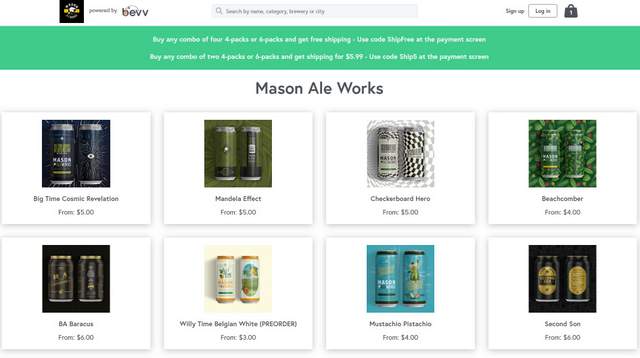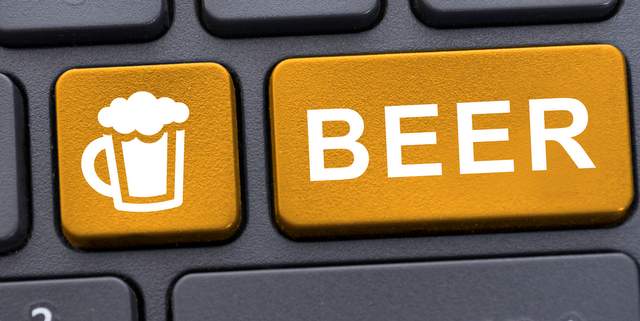
For the past 13 years, Grant Tondro has been successfully navigating one of the most competitive markets in booze and food — San Diego. He’s cofounder and co-owner of 3 Local Brothers, a restaurant group he founded with longtime friend Zak Higson and Zak’s brother Nate.
3 Local Brothers currently owns a vintage wine bar and eatery called The Barrel Room and two locations of Urge, a gastropub brand focused on craft beer and the finer side of American bar food. In 2017, 3 Local Brothers opened Mason Ale Works, a craft brewery that produced around 6,000 barrels of beer last year (gems like Jambi IPA) and is housed in the San Marcos Urge Common House location.
“I was up a 6:00 a.m. this morning so the grease traps could get pumped,” Tondro said over the phone when asked how his day’s going. “The sexy underbelly of the restaurant business. The fun parts that you don’t get to hear about and frankly don’t want to hear about and especially smell.”
Tondro has certainly seen his fair share. He went to college for corporate finance and banking but fell in love with the local craft wine and beer scene in San Diego as a 19-year-old kid running the liquor department at a grocery chain called Vons. In fact, he’s always wanted to own a vineyard, “but I’d say I’m about $50 million short of ever owning a failing winery.”
Craft beer has been a satisfying backup plan for 3 Local Brothers, especially of late. The pandemic shut down all of its businesses at one point, but the brewery has since emerged as its bright spot.
The new reality

“We laid off almost everybody right away,” said Tondro. “Within about a week, we ended up hiring the brewers back. We needed some time to get the lay of the land as everything was happening so quickly. After about a month, we started bringing some staff back to do to-go food sales. We probably have 50 people back out of the 200. It’s been an interesting transition on that side, and it’s so weird for us because the restaurant themselves aren’t doing well. We’re at about 40 percent of what we were before COVID. It’s enough to keep us cash neutral, which is not a great position to be in, but meanwhile the brewery is going through this renaissance, especially on the canned package, and that’s really one of the things that’s got us looking at this big change and pivot in our model.”
COVID-19 has decimated the on-premise side of the brewery and restaurant businesses, so Mason Ale Works quickly turned its attention to a direct-to-consumer sales model. Luckily, the company installed a new Wild Goose canning line a while back.
“We bought a canning line as soon as we got the larger facility open, which I remember at the time just agonizing over the decision, because it was not a cheap investment to make,” said Tondro. “But gosh, if we didn’t have that canning line, the brewery would probably be out of business. But, the thing that we missed with this pivot the last couple of years was we didn’t do a good enough job of getting our direct-to-consumer sales going. That’s really where Modifly comes in.”
Modifly is a San Diego-based agency that specializes in social media marketing. Its services range from influencer and social media strategies to website and content creation. Modifly is leading the creation of Mason Ale Works’ new direct-to-consumer sales site and social campaigns, focused on creating brand awareness, engagement and sales. Elijah Schneider, founder and CEO of Modifly, created the agency in his dorm room at Cal State San Marcos when he was 19.
“First off, we started looking at how to monetize Mason digitally,” said Schneider. “Obviously. it’s direct to consumer. We went straight to a strategic session, so really demographics, psychographics, things like that, making sure we’re actually talking to the right people the right way. Then from there just positioning the brand digitally, not like whole brand positioning itself, but you’re taking the thing that’s already been created and just making it live online. So, there was definitely a lot of work and learning, trying to figure out the best story for Mason.”
Building the story

Modfily and Mason Ale Works are trying a little bit of everything with its direct-to-consumer sales strategy. There’s an online portal through its website (here), local delivery, shipping to 26 states and the launch of a membership program. From a brewery perspective, Mason Ale Works already plans its beers several months out, so it really now comes down to allocating enough beers for each channel — local delivery, in-store pickup, multi-state shipping and membership. Modifly helps drive traffic to each of those channels, and as that continues Mason Ale Works will adapt its staffing and marketing spend to best support each way its customers can order Mason Ale Works beer.
“The majority of it is social marketing, both organic and paid,” explained Schneider. “In addition, we will be activating some influencers here in the next couple of weeks together, just to add more buzz around it. We have many different verticals.”
Mason Ale Works’ new online store and shipping partner is Bevv, which is allowing the brand to sell into 26 states. Bevv is an online marketplace that provides a platform for beverage manufacturers to sell products directly to consumers. Bevv facilitates the transaction in a safe and compliant manner per the laws in the brewery’s state and the customer’s state, then provides the necessary paperwork (shipping labels, order details, etc.) for brands to fulfill orders in their own way. In fact, I worked with Bevv to promote its playbook on direct-to-consumer sales for breweries last summer. Read that over here.
5 tips for marketing DTC on social media
By Elijah Schneider, founder and CEO of Modifly
1. Focus on building your audience more than selling things to them. It’s about building a digital relationship first.
2. Be fun and happy! No one wants to hear the bad in the world … be an escape.
3. Ensure you’re telling the right story. Be who you are and who your company is. Don’t follow trends.
4. Find your right platform. It may be Instagram, Facebook, Snapchat or others. Make sure you’re testing.
5. Have high-quality content. Try investing in a camera or a photographer.
More DTC tips

Most California breweries can already ship to anywhere in California, but Bevv increases that reach significantly. To ramp up those sales, targeted social media ads with more refined demographics and messaging allow Mason Ale Works to set itself apart in online community spaces and drive traffic. It is currently running six different types of direct-to-consumer ads via social media and influencers, and it is seeing a 4.43 times return on ad spend and 38 percent increase on the business as a whole.
“We really started pushing about a month and a half or two months ago,” said Schneider. “The really big findings in the first four weeks would apply to any brewery. First and foremost is shipping. Cause, like we all know, nobody wants to pay shipping costs. You’re shipping a liquid. It’s very expensive to do that, let alone a liquid that has to stay typically cold and a liquid that has to be signed off on. So, shipping’s definitely the biggest insight we found in addition to some pretty strategic price points, meaning we’ll be implementing a minimum order size moving forward. $25 minimum. That way we can lower shipping costs and make it affordable for them. On top of that, when you have an audience, 5,000 to 6,000 people that engage with you on a daily basis if not every-other-day level, they want new stuff all the time.”
Perhaps counterintuitive in these uncertain times, Mason Ale Works is actually ramping up its brand variety, producing a lot of different limited beers each month.
“It’s been an interesting shift throughout the pandemic,” said Tondro. “About a year and a half ago, we switched our model to having two big releases every single month, in addition to our cores — just as we saw this sort of fear of missing out/if-it-ain’t-new-it’s-through-type mentality. So our plan going into 2020 was to change it from two new release to four. During the pandemic, we saw all of that get amplified … So, we’re at a point now where we’re producing anywhere from eight to 12 new beers every single month, just to constantly give people something new as well as kind of limit the batch size a little bit. We want to push this limited release, you’d-better-get-it-now, cause-it’s-going-to-be-gone-tomorrow-type mentality because that’s the space that we’re living in now.”
It’s about building that relationship

Selling beer direct to consumer is second only to selling beer by the pint over your own counter in terms of profitability. It cuts out the distributor and the retailer from the markups and allows the brewery to keep a lot more money its pocket. It appears to be the near future of operations for small breweries. Channels like brewery websites, social media outlets and search and display ads can serve to create both brand awareness goals and drive traffic to direct-to-consumer sales. It’s easily measurable. When attributed to a final sale, social media marketing spend will have an easily calculable ROI, Plus, brewers can glean customer information and data from their social media strategy, which will help form a new marketing plan.
“It’s not about selling beer, it’s about actually building that relationship,” explained Schneider. “So, you shouldn’t be just pushing your product all day long. The goal is not just to showcase — look at this great beer, come try it, type thing. It’s not that at all. It’s showing them why they should care. It’s building a relationship online because breweries are in a way a community center because people become attached to them.
“The biggest thing is don’t try and change opinions. Try and form new ones, if you can. On a content level, just be frank. We fell flat on our face the first time we launched. The reason for that was because we took the approach just like anybody would have — really great custom studio content — but the best content for beer that we’ve seen is literally stuff that looks like it was shot on an iPhone. Right now, that’s performing almost three times as good as any pro imagery. Within Facebook, there are eight different types of targeting metrics. Conversion usually is the main one because obviously it creates conversions. For beer, we’ve actually seen it’s Engagement. It’s not about getting people to buy, but it’s about making people feel and see what type of brewery you really are, because it seems that this is mostly a word-of-mouth market.”





Leave a Reply
You must be logged in to post a comment.